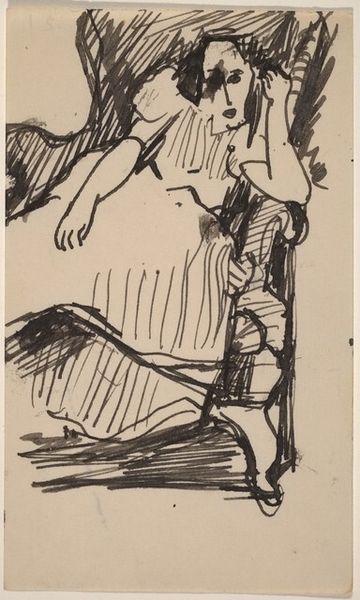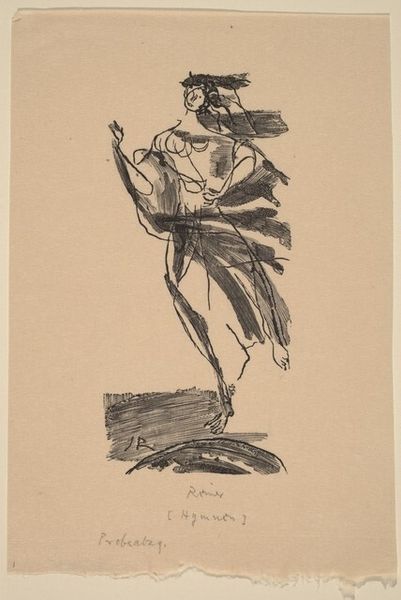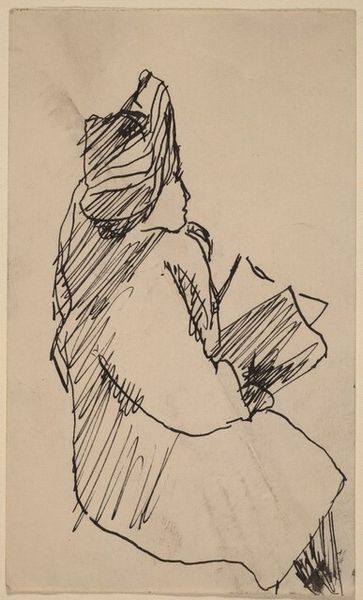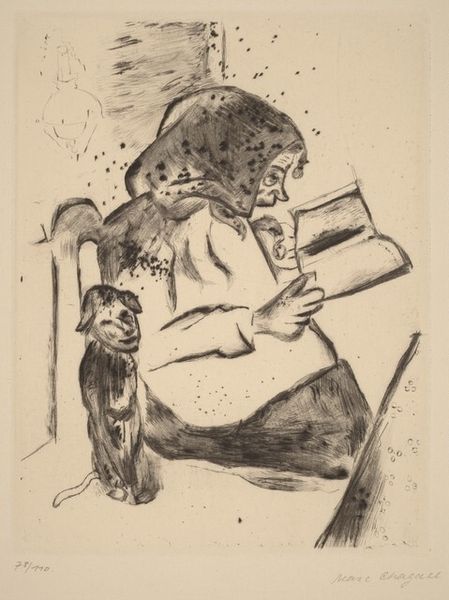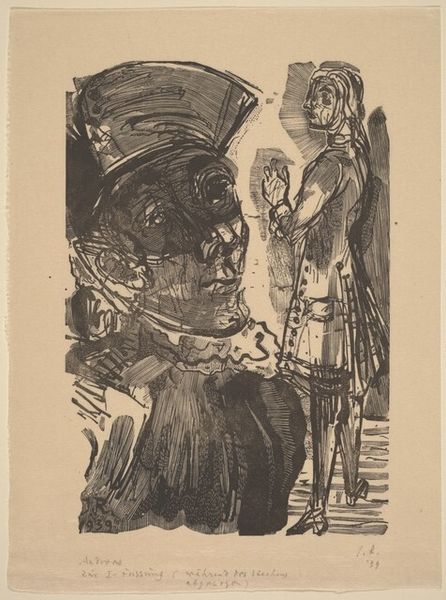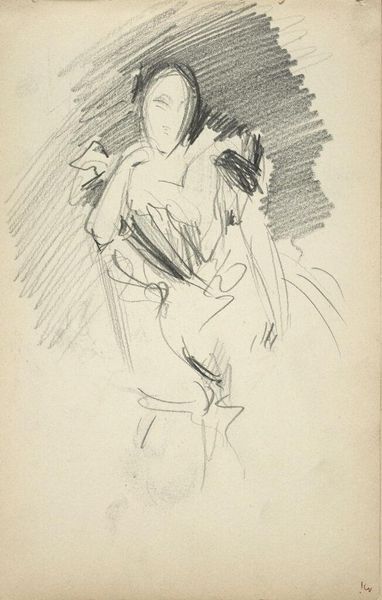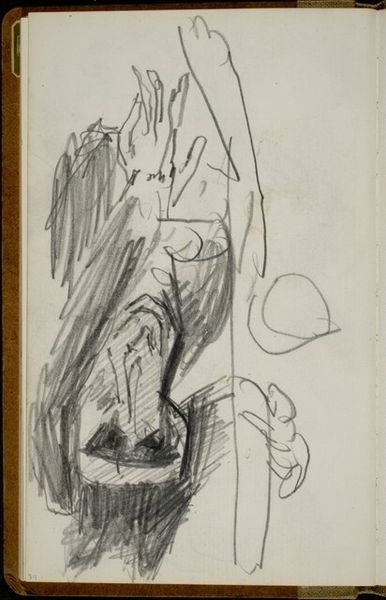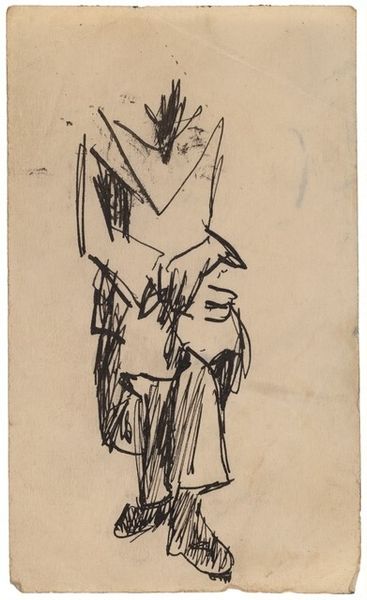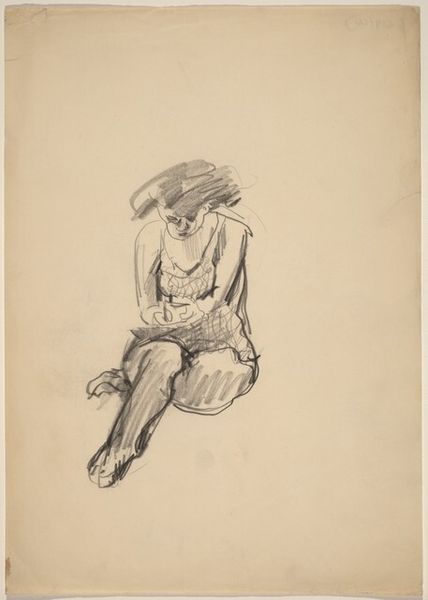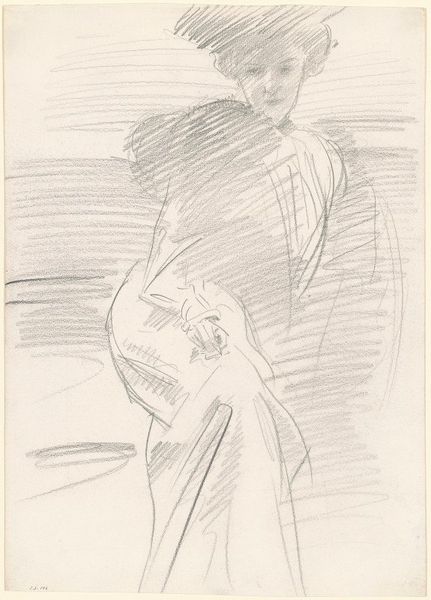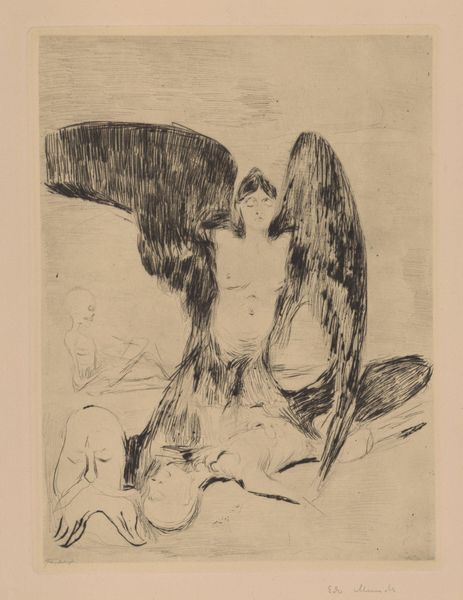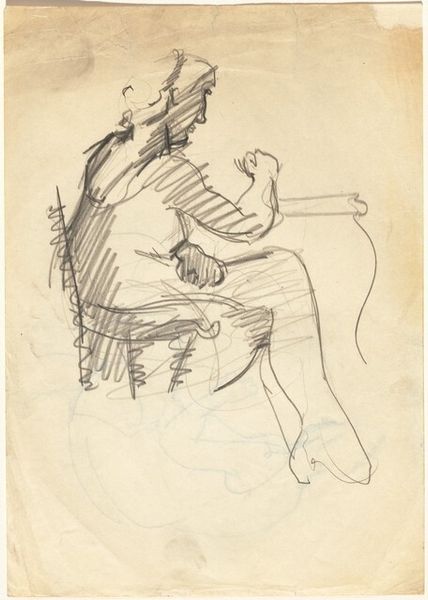
drawing, print, ink
#
portrait
#
drawing
#
ink drawing
# print
#
figuration
#
ink
Copyright: National Gallery of Art: CC0 1.0
Curator: This work is entitled "Illustration to V. Hofmannsthal, 'Andreas'," created circa 1944 by Imre Reiner, using ink as the primary medium, notably as an ink drawing. It seems to be a print. What strikes you first about it? Editor: The frantic energy of the lines! It's almost dizzying. Notice how the rapid hatching creates depth, particularly around the figures. A palpable sense of movement and nervousness arises. Curator: I agree. It is evocative of turmoil. The woman's veiled head and clasped hands create a distinct sense of constraint. This piece was designed as an illustration for Hofmannsthal’s "Andreas", an unfinished novel with prevalent themes of spiritual crisis and identity. Could her veiled presence represent a concealment, perhaps a repressed truth or identity? Editor: Undoubtedly. The veil acts as a semiotic marker, screening her psychological state from full view. Also, it is worth noting that Reiner worked with a linear style that eschews detailed modeling, which emphasizes flattened forms in almost two dimensions, bringing forth a stark immediacy. The limited tonal range adds to that effect. Curator: Precisely, and within the historical context, created in the midst of World War II, perhaps this restraint also references cultural suppression or the necessity to mask oneself. What might this female figure represent symbolically? Editor: Thinking formally, the abrupt lines almost fragment the body. A visual breakdown into its elemental forms can also act as a visual metaphor for existential unease, aligning her formal deconstruction to the emotional landscape implied. Curator: Fascinating. This deconstruction then reflects both personal and larger societal fractures. I think we find in the ink itself an appropriate vehicle for the themes the artwork expresses—the idea of revelation but also indelibility; ink makes its mark. Editor: And isn't that dichotomy at the heart of any symbol, both hiding and revealing at the same time. This close looking allows us to consider both the universal and the immediate that the art piece reveals.
Comments
No comments
Be the first to comment and join the conversation on the ultimate creative platform.
